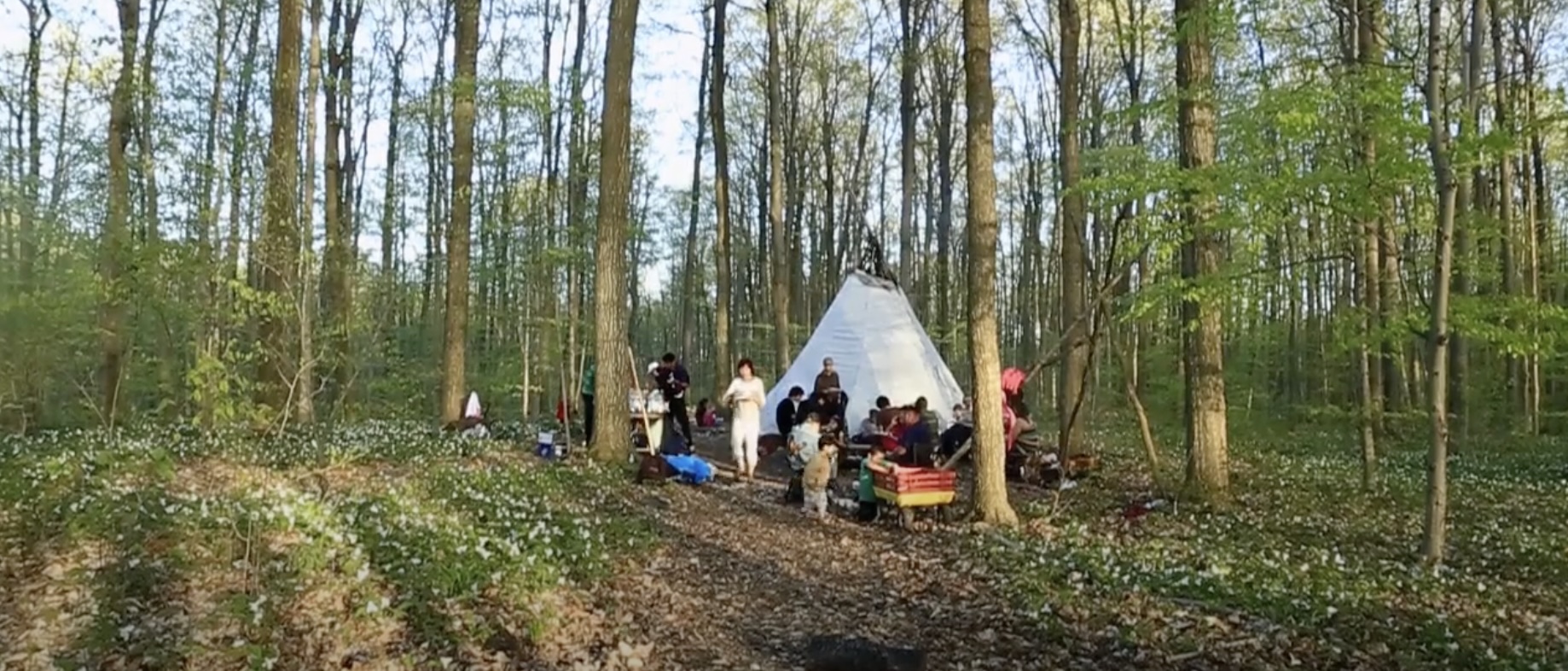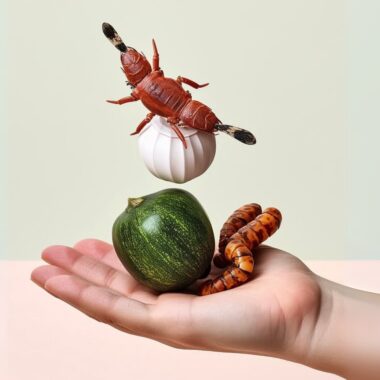First Nations filmmaker and curator Cass Gardiner talks to The Common Table about stewardship, reciprocity, the bittersweet aspect of “home”, and how she uses food to open a window for non-Native people into her world and community.
The Common Table: Thank you for joining us at The Common Table today. What have you been working on lately?
Cass Gardiner: I have just come back from South Dakota, where I’m currently shooting a documentary called Botany of Nations. We were camping with local Lakota folks, Luke (Tetowan Lakota, Itazipco Band) and Linda Black Elk, harvesting timpsila, which is a prairie root vegetable that was once a huge foodstuff that fuelled the economy of a big part of North America. But now, like a lot of native foods, it is endangered because of various issues related to settlers.

TCT: You yourself are First Nations, right?
Cass Gardiner: Yes, both Anishinaabe, sometimes called Ojibwe in the USA, and Algonquin First Nation. Kebaowek First Nation is where my Algonquin side of the family is from, and where I have my status, and Nipissing First Nation is where my Anishinaabe family is from.
TCT: How do you see your role and responsibilities as a storyteller in the context of who you are, and also in terms of food and foodways?
Cass Gardiner: I’m a filmmaker now, but I began as a studio photographer. I went to NYU for my undergraduate degree, and I took, perhaps erroneously, a native art class for fun. But it turned out to be so incorrect, and was so racist, it just blew my mind. I remember at one point looking around at my classmates and thinking this is probably the first and only time they’ll engage with anything involving Native peoples and arts, and by the tone of it, you would think we were all dead.
I started thinking about ways in which I could get people to care about Native people and feel invested, and to create a space in which they can enter the culture in a way that feels appropriate.
So I started thinking about ways to get people to care about Native people and feel invested, and to create a space where they can enter the culture in a way that feels appropriate and where I could also express myself. Food became that thing for me. Food is a form of cultural communication that can be, but doesn’t necessarily have to be, specific to the place that you’re in. It felt like a window that I could provide for non-Native people into my world and my community.

It also became a medium through which I could learn about my culture as well, because I grew up between various Native experiences. Many of my aunts and uncles, as well as my grandfather and grandmother, didn’t feel it was safe to be proudly Native. Never once, for example, did I hear my grandfather say that he was. He had been mistreated and abused throughout his life for being Native, so he struggled with that identity for a long time. My mother, too, grew up with this fear and kind of wished she wasn’t Native because of how much bullying and stigma she experienced. I grew up more in an area where people didn’t know what it meant to be native. So when I said “I’m Native”, they were like, “That’s cool”. And that was it. So I had much more freedom to explore my culture and didn’t have that fear and sense of shame that a lot of our older people have experienced.
My grandfather had been mistreated and abused throughout his life for being Native, so he struggled with that identity for a long time.
Food became a way in which I could just explore and invite people in. As I’ve gotten older, making my films that have been seen more internationally, I feel that my role has been largely to correct the historical narrative and that also can be expressed through our food and how we get our food, which is very tied to the land – so closely, it is part of the Anishinaabe origin story.

Thousands of years ago, we lived on the East Coast and received a prophecy that said that we had to migrate West, and we shouldn’t stop migrating until we reached the place where the food grew on the water. When we found that, said the prophecy, that’s when we would know we were home and where we were meant to be. So our whole nation migrated west until we got to the Great Lakes region, which is where wild rice grows. Wild rice is a reed that grows up out of the water, and to harvest it, you had to knock it so the seeds fall out of the reed into the canoe. When we found the wild rice, we saw that this is where we’re meant to be, and that’s where we’ve settled for the last couple of thousand years.
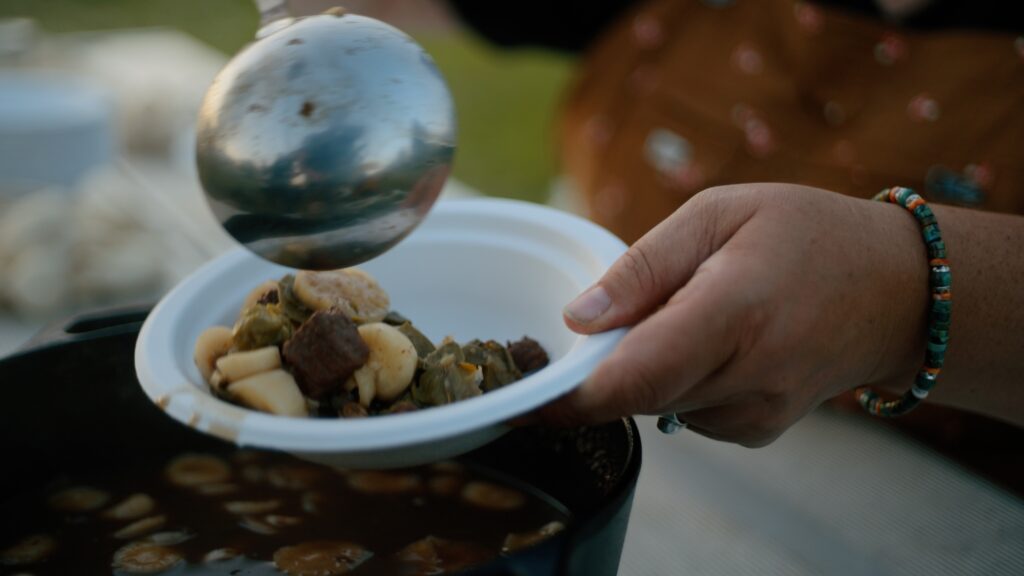
TCT: Is there a difference between the cuisine that you were brought up with and the kind of foodways that you have today as an adult?
Cass Gardiner: We were fortunate that on our reservations in Northern Ontario and Quebec, and growing up in New Jersey, USA, we shared a lot of similar foods, so we weren’t completely disassociated from the land. It was different for displaced citizens like the Potawatomi who were relocated from New York to Oklahoma, which has completely different land and ecologies. In the residential schools, it was illegal to practice your ceremonies and traditions or even speak your own language [In the 19th and 20th centuries, Native American children were forcibly sent to over 526 government-funded, often church-run, Indian boarding schools across the U.S. and 130 in Canada to be “educated” into settler culture. The last federally funded school in Canada closed in 1997. ed.]. The motto of these schools was, “Kill the Indian, save the man”, if you can believe that. A lot of kids would go to these schools knowing only the Anishinaabemowin language, and then come back only knowing English, so they couldn’t speak to any of their elders or their parents. It also meant a huge loss of stories and traditions.
A lot of kids would go to these schools knowing only the Anishinaabemowin language, and then come back only knowing English, so they couldn’t speak to their elders or their parents. It also meant a huge loss of stories and traditions.
But for survival, and because they were so poor, communities would still do a lot of foraging and a lot of hunting to supplement their food for children and family. So my grandfather did grow up hunting, and my mom grew up with traditional foods like moose meat and deer meat. They would also snare rabbits and eat very much off the land in that way. There was still a stigma, though. My mom said that, as a little girl, she knew meat from the butcher was wrapped in white paper and that meat in brown paper was hunted, and she wished for butcher’s meat, but they couldn’t afford it. My great aunt shared in my film The Edible Indian that a moose could feed our whole family of eight for a winter, whereas beef was too expensive. I didn’t grow up necessarily eating wild meats, but we did have wild rice. I do remember that it was like a treat, but not as a staple.
TCT: Is there more awareness of traditional foodways and eating traditionally now? Is that changing? And is it changing for you?
Cass Gardiner: While researching for my upcoming film Botany of Nations, I went to help dig camas bulbs in Washington State. As we were digging, an elder woman told us: “These foods have always been here, but they appear to us sometimes when we need them the most. So the fact that we’re here digging camas in a field that hasn’t been dug in 100 years means that the camas knows we need it now. It’s up to us to figure out what that means and why they are coming to us now.”
These foods have always been here, but they appear to us sometimes when we need them the most.
I feel that with traditional foodways like this, knowledge has always been here because the land has always been here, right? And we’ve always been in this space. For a long time, it was unsafe to practice a lot of our culture, or quite literally illegal. But now we’re in a place where those restrictions and those laws are not there anymore, so the timing is perfect for us to relearn about our culture. It’s like a very different landscape now, and I think people are more interested and excited about it.
Also, ultimately, in order to discover our traditional foodways, we need the cooperation of the settler society. A lot of traditional foodways require access to land, and Native people, famously, don’t own a lot of land, so we really rely on the cooperation of people who own fields, ranches, farms and other private properties to let us come back on them in order to gather our traditional foods. This includes national and state parks; we have to get their permission.
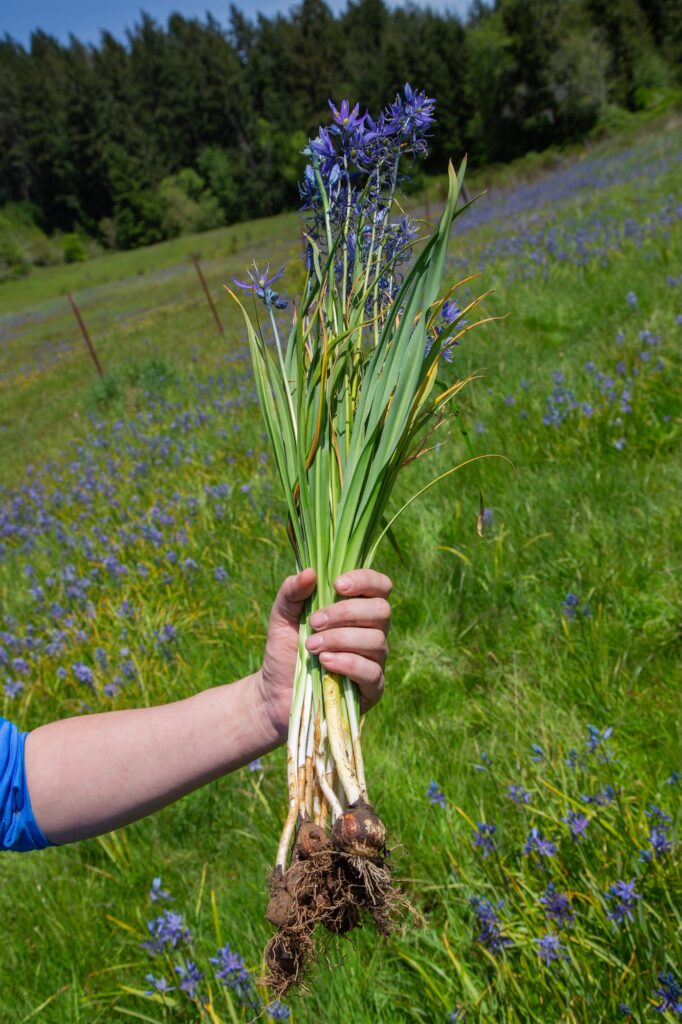
TCT: Could you talk a bit more about the importance of sharing and community in First Nations food culture?
Cass Gardiner: The whole idea of sharing speaks to this concept of reciprocity, which is a huge thing for us. Not just with food. There’s this term in Anishinaabemowin, Mino-bimaadiziwin, which basically means “the good life”, and that is the philosophy of Anishinaabe. We believe we’re here on this earth for a limited time to live a good life.
A good life means enjoying the things around us, but not centring ourselves. We believe that we’re just part of this larger ecosystem, this larger universe. And while we’re here in this moment in time and place, we’re meant to live well by contributing and by being part of a community. Making sure that we live well means everyone else lives well as well by not doing harm and actively helping the people around us. This is what makes us live a good life: being in harmony with all of these other nations that we live with: the plant nation, the winged nation and the animal nation.
We believe that we’re just part of this larger ecosystem, this larger universe and while we’re here in this moment in time and place, we’re meant to live well by contributing and by being part of a community.
I know people have co-opted that idea in a very Pocahontas, reductive way, like “Ooh, they think the rocks are talking to them”, but it goes deeper than that. I respect that these rocks are here, and they serve a purpose, and they help me, and I help them, and we coexist together. That’s the reciprocity, and it extends to the plants and the animals as well. When we hunt, we pray after the animal has been slaughtered and will put tobacco down. Tobacco is like our most sacred medicine. When you burn the smoke of tobacco, you’re sending a message directly to the Creator, an offering, because it’s reciprocity. There’s always an equal exchange, and you’re never taking for granted that someone is giving you something.
In European settler speak, we would say these are symbiotic relationships, but they are just reciprocal relationships. And we have them with the land, which is why we feel we are the stewards of the land. We’re not here to extract from it and make it completely different. We’re here to make sure that the land is as healthy as it can be, so when we pass away, seven generations from us will still have the same health and quality of life on the land that we experienced.
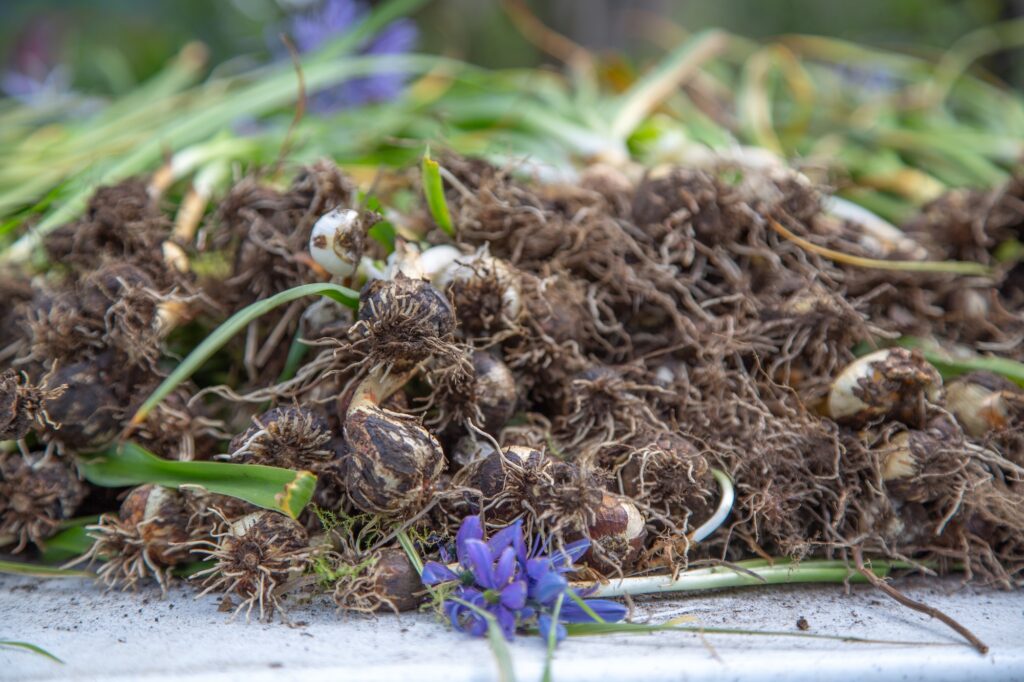
Also, we have to remember that our ancestors lived off the land exclusively. So it’s about survival, too. As anyone who’s farmed or has a garden knows, some years you can do everything right, and still your crops fail for some reason. So you have to rely on the relationships with the people around you to survive.
TCT: I read recently that a large percentage of the bio habitats in North America are a direct result of millennia of First Nation stewardship of the land.
Cass Gardiner: A few years ago, elders in British Columbia said, “We know that we’ve stewarded these lands and that this landscape only looks like this because we had a hand in manipulating it to look this way, but no one will believe us unless a white scientist comes and proves it.” So they invited ethno-botanist Chelsey Geralda Armstrong to study the landscape. She took soil samples, carbon-dated charcoal streaks in the land and came to the conclusion that the only way this could have happened was through human intervention. The plants here don’t grow together in nature. They would have had to be cultivated for hundreds of 1000s of years. She found chestnut trees from the East Coast that were growing on the West Coast, for example and so on. There was so much evidence.
We know that we’ve stewarded these lands and that this landscape only looks like this because we had a hand in it, but no one will believe us unless a white scientist comes and proves it.
Native peoples also had extensive trade routes. The fact that corn is from Mexico, but grows as far north as Winnipeg in Canada, is due to extensive trade. Even the Lakotan family I was with last week in North Dakota said that traditionally, they used a lot of seaweed in their food, which came from trading their timpsila with people on the West Coast.
This is the big thing that I’ve been trying to shout from the rooftops for the last two years. The settler notion that humans are inherently bad for the environment and can only bring negative outcomes is completely wrong. Nature thrives when we intervene and have a hand in its stewardship.
The settler notion that humans are inherently bad for the environment and can only bring negative outcomes is completely wrong. Nature thrives when we intervene and have a hand in its stewardship.
TCT: Going back to dislocation in the face of the essentialness of being part of the land, and comparing that with a notion growing in popularity that “local” food is best in terms of resources, how would you describe the concept and understanding of “local” – and “home” for that matter – in First Nation communities today?
Cass Gardiner: The idea of “local” and “home” is a loaded and very emotional subject for a lot of First Nations people because the land and where we come from are literally in our DNA. So much of our knowledge is specific to the land that we were on. It’s also why, you may notice, that the number of Native people who enlist in the military is disproportionately high, because we feel very strongly that this is our only home, our only land. We fight for the land, not the people who are currently governing it.
We feel we live and die on this land. It’s where we’ve been. It’s where our home is. It’s where all of our teachings are. So we feel very rooted in a specific place. The part where it gets complicated is due to forces outside of our control. Many of us do not have access to our land. We don’t live in the places that we come from, or it’s too expensive to live in the places that we come from, so I think that is the part that is the struggle and gives a bittersweet aspect to home.
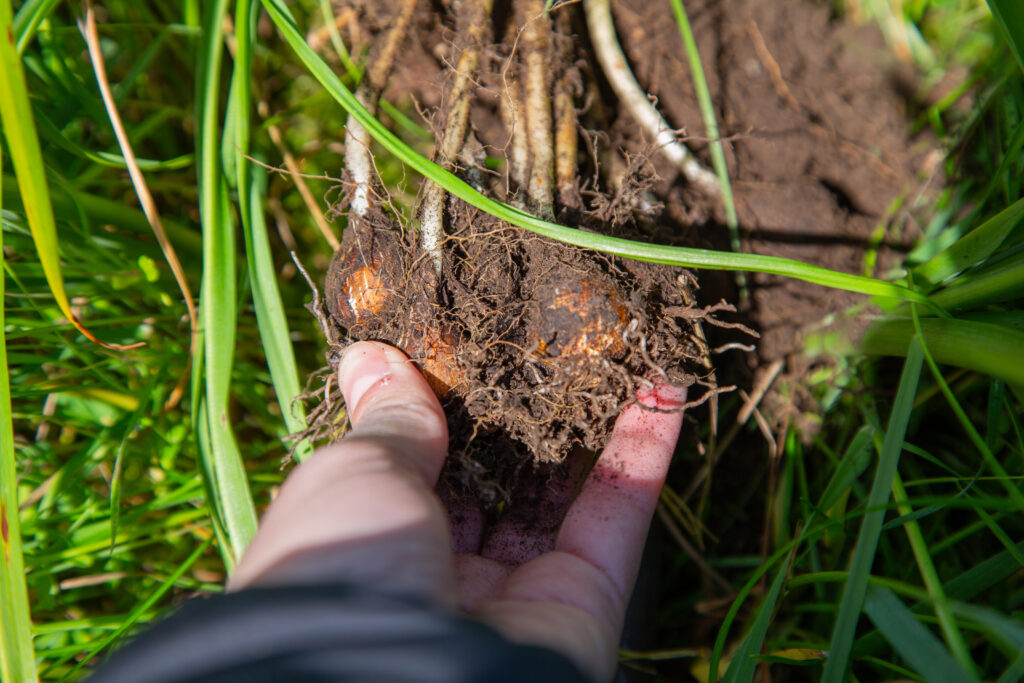
The association with local could be seen as being denied, or having to ask permission for hundreds of years to grow food or forage, or hunt. The settler goal of all the centuries of displacement was to assimilate Native people. This could not happen if Native people were able to sustain themselves without participating in settler capitalism, which they were successfully capable of doing. So, food was one of the first ways they really attacked Native people. They exterminated the buffalo on the plains so that Native people wouldn’t have a food source. They put them on reservations with poor land that they couldn’t leave. And then said we’re only going to give you white sugar, white flour, lard and salt, and you’ve got to make it work with that, and whatever you can farm out of your garden.
So I think that for people who are Native, local, in the way that we understand it, means where you are in your immediate community, getting all your needs met. It’s also about the reclamation of our indigeneity and our sovereignty in that land.
I don’t know if it’s well understood how many legal ramifications there were for Native people in just practising their cultures and eating their foods. I don’t know if you know, for example, that between 1885 and 1951, the Potlatch ceremony was illegal. You were literally not allowed to have a gathering of more than six native people at one time. The Potlatch ceremony was a big feast, and it also really made and strengthened community bonds that they were trying to break. So you would go to jail if you had a gathering, if you had a feast, if you were out collecting in a group setting. Those are the kinds of things we’re now reclaiming.
I don’t know if it’s well understood how many legal ramifications there were for Native people in just practising their cultures and eating their foods.
TCT: What are your thoughts about reclaiming the narrative through gastronomy? The work that Chef Sean Sherman’s doing, for example and the two chefs in your film The Edible Indian, John Whiteduck Ringuette and Ronnie Ottereyes?
Cass Gardiner: I do feel ultimately that most people who are settlers to the lands want to learn now about Native people and want to learn about Native communities, but they’ve just gone about it the completely wrong way for a long time. And so the restaurant can be one place where they feel they can go to learn, and a place where Native people are controlling how they’re accessing the culture and what they’re being given. So I think that’s a really strong way to do it.
The restaurant can be one place where settlers feel they can go to learn, and a place where Native people are controlling how they’re accessing the culture and what they’re being given.
I’ve also had interesting discussions with chefs about what they are serving. On one hand, a restaurant is a place where you give the customer what they want, right? If people aren’t coming, they’re not buying, and you don’t have a sustainable business model. But some popular native foods aren’t traditional, like frybread/bannock and there are some chefs who don’t want to make it because it is what is expected of them by customers. One chef, who’s Anishinaabe, told me, “If an elder comes to me and wants frybread, I’ll make it for them. But if someone just walks in off the street and that’s all they know about Native food, I don’t want to make it for them. I want them to work for it a little harder.”
I think sustainability becomes an issue too when talking about native foods in restaurants, because a lot of the traditional foods are not widely available and take a lot of time to harvest or are endangered. Linda Black Elk mentioned in conversation recently that foods like Timpsila are a good example of this. They are never going to be on a restaurant menu at because they are so precious, and such small amounts can be harvested, no one’s going to give up their community allotment of these very special foods so that it can be on the menu for two weeks.
I think sustainability also becomes an issue when talking about Native foods in restaurants, because a lot of the traditional foods are not widely available, take a lot of time to harvest or are endangered.
TCT: So the responsibility of stewardship comes in and overrides the commercial?
Cass Gardiner: There are categories of food which are more plentiful, like sumac, staghorn, bison, cedar, milkweed or ramps. But still, how do we protect them? Ramps are huge now, but they are also a traditional Native food. I do think that the restaurant is an interesting first point of cultural contact, but chefs are also thinking: “How do I protect this food? I want to share it with people, but I also don’t want it to get overharvested, because it has become a new, trendy thing, and then they don’t harvest it correctly.” As is the case with people going into the forest and ripping up bunches of ramps by the roots to sell.
TCT: This links back to what you said earlier about reciprocity. You don’t learn about giving back in that moment if you’re in a restaurant, do you? I mean, in the capitalist sense, you pay money, but you don’t learn the respect required to understand how much you can consume and what you’re taking from the land or from an animal. So these foodways are perhaps hard to translate into a capitalist gastronomic context.
Cass Gardiner: It’s an interesting challenge, and I don’t know if a restaurant can actually do that. When I was visiting with [chef and food sovereignty activist] Luke Black Elk and asked him about Native cuisine and gastronomy. He said something interesting: that the food we think of as Native now, and that we see in a lot of restaurants, is starvation food. It’s not the rich variety of food we ate in the past when we were trading with everybody, and were living off and had the land to ourselves. The foods that we’re eating now are only a small part of what they once were.

I often wonder what our culture, our food culture, would have been like if there hadn’t been this abrupt rupture from when settlers came and just ripped the page instead of allowing it to evolve naturally. What if the settlers had arrived and had agreed to coexist instead? I wonder if we would have had a robust, very cool food culture by now instead. Because they were so hell-bent on disappearing us, we never got that cross-cultural exchange and an evolution of what American food truly could have been. That is something that I do kind of think about a lot.
What if the settlers had arrived and had agreed to coexist instead? I wonder if we would have had a robust, very cool food culture by now. Because they were so hell-bent on disappearing us, we never got that cross-cultural exchange and an evolution of what American food truly could have been.
Oftentimes, you’ll see Native food in restaurants or cookbooks, and it’s, I don’t want to say bland, but it’s like just meat with salt, pepper, or salt, because pepper didn’t exist. On the plains, there’s a plant with a peppery taste. Luke Black Elk explained that there are all these plants that can be used as herbs and can give flavour and texture and umami and sweetness and things that we don’t even know about, which I feel our ancestors probably were using in their cooking and probably did form more of a cuisine that we would think about today.
Have you heard about the Anishinaabe Seven Fires prophecy? It is from pre-settler times and outlines a series of teachings and historical periods for the Anishinaabe people, during which our knowledge will have to go underground. It will culminate in a choice between two paths during the Seventh Fire, which many say we are in now. One path leads to destruction, and one path leads to igniting The Eighth Fire at a time when indigenous knowledge will be crucial for our survival as a species and lead to a time of peace and unity.

Even in my short lifetime so far, I see that people are now more interested in understanding indigenous ecology, indigenous food sources and foodways. And I feel like there is a growing amount of scientific evidence to prove what indigenous people have been saying forever: that we need to cooperate with the landscape. We need to work with nature and not against it, not thinking that we can control it because we can’t. So I’m actually kind of optimistic that, at least in some form, we can find our way to a version of that future that could have been.
There is a growing amount of scientific evidence to prove what indigenous people have been saying forever: that we need to cooperate with the landscape.
TCT: Do you have a new film in the pipeline? What stories are you working on telling next?
Cass Gardiner: I’m currently working with the Academy of Sciences in Philadelphia on a project that looks at indigenous plants and the communities that still steward them today through a food ecology lens. Their museum has a collection of hundreds of original plant pressings from the 1800s that Lewis and Clark gathered on their Corps of Discovery expedition across the US. En route, they also talked to Native communities and asked them what the plants are called, what properties they have and what they are used for. The Academy has asked me to make a short film for an exhibition they’re doing next March in a way that de-emphasises Lewis and Clark and the settlers and emphasises the Native communities’ role.
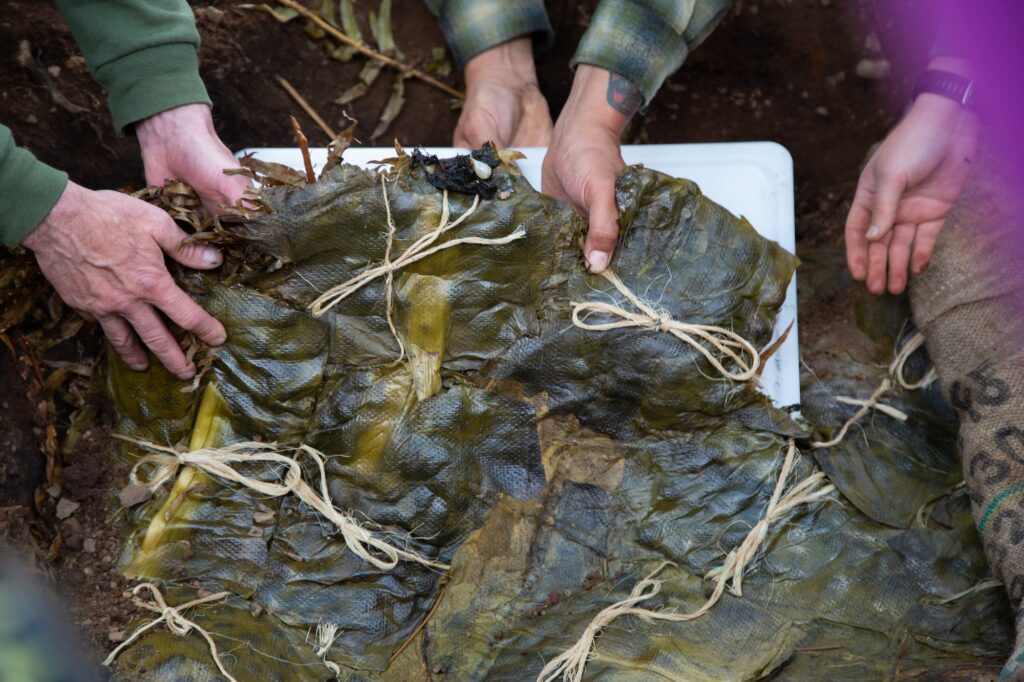
It’s been a great challenge to find ways to show relationality and reciprocity in that circular, holistic worldview we’ve been talking about the whole time. I feel very lucky because I get to travel around and harvest these foodstuffs that the majority of people will never get to do in their lifetime. It has also made me think again about how much we’ve lost when this knowledge has been forcibly removed from our understanding of the world around us and how much richer we will be when we are able to relearn it and articulate it again.
It has made me think again about how much we’ve lost when this knowledge is forcibly removed from our understanding of the world around us and how much richer we will be when we are able to relearn it and articulate it again.
You know, the US has never really contended with its history of exterminating almost the entirety of its Native people, and its history with slavery. We have never fully dealt with the fact that our nation was founded on the exploitation of brown and black bodies. Until we deal with that, I don’t think we can ever truly move forward. So this conversation about these plants is an extension of the story of the Native peoples that was specifically left out. It is the story of how we were this force and carriers of the knowledge base of the land we now live in.
I’m hoping it will be something like this that gets people’s attention today and makes them really think about what it means to be American. What it means to be a visitor or settler in a place, and what it means to be human.
I’m hoping it will make people really think about what it means to be American, what it means to be a visitor or settler in a place, and what it means to be human.
TCT: It is such a huge, complex span of understanding, but at the same time, needs to be considered together, right?
Cass Gardiner: Yes. Especially when societies are still working on changing the idea that humans were put there to dominate the world. And at the same time, you’re still having to explain to people that it’s not okay to wipe out someone from a territory just because you want to have it. That discussion is still going on.
It would be so helpful to move the conversation forward: Acknowledge that this happened, acknowledge that harm was done, and you now have the land. And then work out how we move forward to make sure that we’re protecting this land together, and we’re all getting our needs met.

Cass Gardiner is an Anishinaabe Algonquin filmmaker, curator, and writer from Kebaowek First Nation. Her films include the short documentary Jewel’s Hunt and The Edible Indian, which has met critical acclaim in classrooms and theatres internationally and was nominated for Best Documentary Short at the American Indian Film Festival. She is also a passionate arts activist within Indigenous communities and has worked as a film mentor across Canada.
Her writing has been published in Inuit Art Quarterly, Cherry Bombe, and Compound Butter Magazine. Cass has held a variety of positions within documentary film institutions, including the National Film Board of Canada, Hot Docs Canadian International Documentary Film Festival, and the Tribeca Film Institute. She is an independent contractor for the Smithsonian National Museum of the American Indian in New York City. She holds a BA from NYU Gallatin and an MFA from Toronto Metropolitan University.
